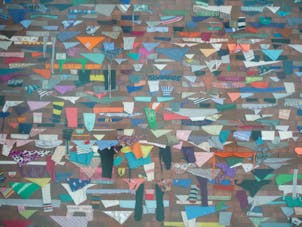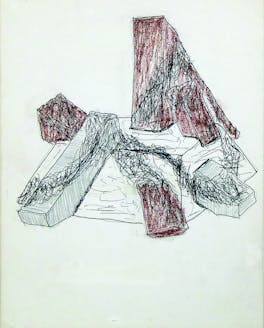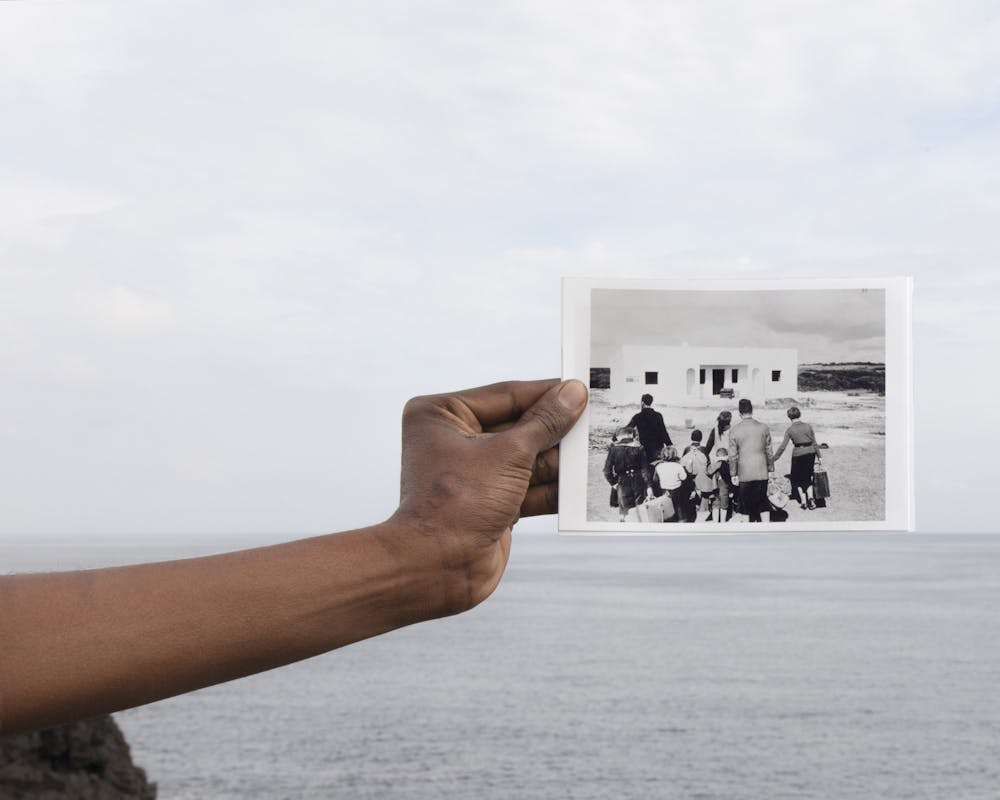Last March, Emily Ebba Reynolds found herself in a bit of a pickle.
She had just begun her first week as the marketing and communications manager for the UB Art Galleries, assuming a position that didn’t even exist before she joined the staff. Not only did she not have any predecessors or handbooks, she was immediately tasked with preparing for an exhibition scheduled to open in just a few days.
But then, the day before the opening, the exhibition was thrown into doubt because of COVID-19, and her job became completely virtual. In a matter of moments, the usual anxieties associated with starting a new job became nearly unnavigable.
Ebba Reynolds was tasked, along with the rest of the staff, with figuring out how to move the exhibits online, until people could return to the Center for the Arts. She couldn’t believe what was happening.
“Usually, when you start a new job, you meet your colleagues and then you’re quickly with them in person a lot,” Reynolds said. “And, especially at UB, being part of a gigantic institution with thousands and thousands of other staff members that usually I would see in person, it’s been really odd to navigate the bureaucracies from a digital position up in my attic. But, I’ve also really enjoyed getting to take my puppy out in the middle of the day. So, there’s a trade-off.”

At the CFA Gallery, the first-floor exhibit “Karyn Olivier: Everything That’s Alive Moves” opened on Oct. 29.
Over the past 11 months, Reynolds has been working hard to reopen the UB Art Galleries — both online and in person. Her efforts culminated on Feb. 4, when the Center for the Arts Gallery and the UB Anderson Gallery reopened to visitors for the first time since November. But along the way, she and the rest of the staff learned an unexpected lesson: the technologies UB used to keep the galleries running online are likely here to stay, even after the pandemic ends.
“[The pandemic] sort of forced us to take a step back and look at the way we were presenting things online, or the lack of what we were doing before, and reassess that and try to do a lot of different things,” Robert Scalise, the director of the UB Art Galleries, said. “So, it’s giving us a new audience. I’ve gotten a lot of feedback from the augmented tours from people that haven’t been to the galleries before that knew about us but hadn’t had the chance to come. With that, we’ve done a lot of tours with UB donor groups like the UB wellness group visit that’s geared towards faculty and staff, and it’s opening us up to a lot of programs that we never did before, but that I believe we will continue to do well past the pandemic.”
Liz Park, curator of exhibitions for the UB Art Galleries, said that the virtual format has not only helped facilitate the use of new technologies, but has also helped expand the organization’s audience.
“We’ve been having a really amazing turnout and a great engagement with all sorts of people who I’m like, ‘How did you hear about this? You’re like in Hawaii, or in Toronto, or wherever you are, and you’re here talking to us about photos on a Tuesday evening,’” Park said.
In previous years, the galleries have changed exhibits each semester. But, this summer, the staff decided it would focus on only four exhibits throughout the academic year. Scalise said they did this to allow for more flexibility while facing the pandemic’s challenges.
“We knew there were going to be a lot of uncertainties,” Scalise said. “But, we would have enough time [with four exhibits] that people will be able to come in, appreciate the exhibitions and do a lot of online and hopefully in-person programming around them.”
At the Anderson Gallery, the first-floor exhibit “Dawit L. Petros: Spazio Disponibile” opened on Sept. 24 and will remain open through May 15. The exhibit uses photos, videos and sounds to look at the historical gaps in memory related to Italian colonialism.
On the second floor, “Bruce Kurland & Justine Kurland – Two Worlds: Illusion & Document” will remain open on the same timeline. In the exhibit, Justine Kurland, a contemporary photographer, revisited her relationship with her late father, Bruce Kurland, a Buffalo painter who died from cancer in 2013.
At the CFA Gallery, the first-floor exhibit “Karyn Olivier: Everything That’s Alive Moves” opened on Oct. 29. The exhibition is composed of large sculptures made of small items representing what it means to be part of a larger community.
On the second floor, the exhibit “Philip Pavia: Drawings And Small Sculptures” opened on Oct. 29 and will remain open through March 13. The exhibit documents Pavia’s process in creating the new outdoor sculpture recently installed on UB’s North Campus, “East Pediment, Sun-up (1965-66).”
As the curator, Park worked on all four exhibitions this year that she says collectively explore “the question of what it means to remember.”
Local residents can visit the gallery by making an appointment online, either in advance or on the day of an event. Visitors must provide their contact information for contact tracing purposes and fill out UB’s Daily Health Check upon arrival. Each exhibit can hold up to 20 masked visitors.
To help prepare for the fall semester, Reynolds began researching past attendance numbers and was surprised to find that the galleries averaged 5,000 to 9,000 visitors per year, with some semesters eclipsing those numbers. While only 200 or so people have attended the physical exhibits this academic year, because of COVID-19, more than 5,000 people have been able to attend virtually — from around the world.
“Since the pandemic, 73% of our engagements with visitors have been through digital programs, which before would have been 0%,” Reynolds said. “So, by having these programs available digitally and working with a partner, I think we’ve reached a lot more people than we would have in the past.”

On the second floor, the exhibit “Philip Pavia: Drawings And Small Sculptures” opened on Oct. 29 and will remain open through March 13.
Although people from around the world have been able to view the exhibits far from the confines of the CFA, the staff acknowledges that more can be done to reach students at UB. They say they continue to offer student internships, work-study positions and graduate assistantships for those who are looking for something beyond virtual and in-person tours.
The UB Art Galleries did not respond to The Spectrum when asked about the cost of operating the virtual and in-person exhibitions.
No matter where in the world they are, people can visit the Art Galleries’ website and take a free virtual tour of the exhibits. These in-browser augmented reality tours are created with 3D scanning equipment. Using only a computer mouse, visitors can move through the virtual space, browse the different artworks, read the various captions and experience extra supplemental material, like videos and audio clips.
Before the pandemic, the galleries had never worked with this kind of technology before. But when the “Sally Cook: 1960–Present” exhibition had to be canceled the day before it was supposed to open, the entire staff had to figure out how to still open the exhibit to the public without having in-person tours. With the help of a local company, the entire exhibit was scanned and put online so that everyone could still see the art. Since then, the UB Art Galleries have purchased their own 3D scanning equipment and now scan each exhibit.
Scalise says he is looking forward to the future and all the possibilities it holds.
“With all the challenges that we face this year, I’m grateful that we’re able to still offer in-person demonstrations and that we keep moving forward,” Scalise said. “With all the analyzing of what we’re able to do, the programs we’re able to do virtually and the numbers that we set, I’m really excited for our future.”
CORRECTION: This story has been updated to reflect that the UB Art Galleries can accommodate up to 20 visitors per hour at each location, not 30. The Spectrum regrets the error.
Anastasia Wilds is the senior arts editor and can be reached at anastasia.wilds@ubspectrum.com and on Twitter @AnastasiaWilds
Anastasia Wilds is the senior arts editor. She has been writing for newspapers since her junior year of high school, and she has appreciated all forms of art for even longer. When she’s not writing, she is either reading, listening to music, hanging out with her friends on discord or streaming on Twitch.





